Polish missile strike: what do we know so far?
What do we know about the Polish missile strikes so far?
This post is about a current event: I’ll update this post as we go with some of the official statements and better-informed early analyses of we know about the explosion on Tuesday in Poland.
Last update: Wednesday 1252 ET
Context and missile strikes inside Ukraine
The strike on Poland took place within the context of a massive series of strikes against Ukraine, which appear to have been primarily targeting power and associated critical infrastructure in Ukraine. Russia has been attacking Ukrainian power infrastructure in earnest since approximately April, with a marked increase in attacks since October 10, shortly after a change of military leadership inside Russia and very shortly after the attack on the Crimean Kerch bridge.
At this point it seems certain that Russia has a top-level objective of disabling power infrastructure across the entire country. Ukraine’s Deputy Minister for Energy stated that today’s attack is the largest-scale shelling of the energy system in Ukraine since the beginning of the war.
Tuesday’s attack involved approximately 100 Kh-101 and Kh-555 cruise missiles and at least 10 drones, the largest mass-attack since October 10. Ukraine claims to have shot down 73 of these missiles and all of the drones.
The attacks may have been planned as a response to Zelensky’s planned speech at the G-20 summit.
Not just Kyiv was hit: many other cities were left without power. Kyiv, Rivne, Zhytomyr, Lviv, Khmelnytskyi, Dnipropetrovsk, Poltava, Vinnytsia, Odesa, Kirovohrad, Cherkasy, Volyn, and Kharkiv regions were all hit, with partial or total power outages in many areas.
Reporting and pictures show many of these cities and regions without power.
For example, in Kyiv:
In Lviv:
In Kharkiv:
The strike in Poland
According to the Polish government, the strike took place at 15:40 local time in the village of Przewodów in the Hrubieszów poviat in the Lubelskie Voivodship, killing two Polish citizens.
Map graphic of impact site inside Ukraine via BBC News
Who fired it?
On this question, Poland and NATO allies are being cautious.
Some open-source analysis of the debris suggests that the debris is from an S-300 missile.
This type of missile is common in Ukranian air-defense systems, although it can also be used for ground-to-ground launched attacks. The location is very far from Russia, making that more unlikely. It could have been fired from inside Belarus—Russia has done missile strikes from there against Ukraine in the past—but it’s perhaps less likely.
Note that Polish and US radar defense systems should be able to concretely determine where the missile was launched from; we will not have to rely on guesswork on this question for long.
The Polish government is being cautious. The Polish MFA says the missile strike was “Russian made”, although that doesn’t say specifically that the missile was fired by Russia. Polish President Duda is even more cautious, saying “we do not have any conclusive evidence at the moment as to who launched this missile... it was most likely a Russian-made missile, but this is all still under investigation at the moment”
Update: the Polish president has said
From the information that we and our allies have, it was an S-300 rocket made in the Soviet Union, an old rocket and there is no evidence that it was launched by the Russian side. It is highly probable that it was fired by Ukrainian anti-aircraft defense
The Ukrainian government is saying the missile was fired by Russia. Ukrainian Foreign Minister Kuleba goes further, saying that any suggestion that it was a Ukrainian air-defense system is a conspiracy theory.
Ukranian President Zelensky says “I have no doubt that it was not our rocket.”
The US government is being cautious. President Biden said, when asked on whether the missile was fired by Russia: “There is preliminary information that contests that. I don't want to say that till we completely investigate, but it is—it's unlikely, in the lines of the trajectory, that it was fired from Russia. But we’ll see.”
Be careful here too: note that from Russia and by Russia are slightly different.
Three anonymous US government sources have told the AP that preliminary US assessments suggested the missile was fired by Ukrainian forces at an incoming Russian one amid the crushing salvo against Ukraine’s electrical infrastructure Tuesday.
Nato’s secretary general says that an investigation is continuing, but initial analysis suggests the explosion was “likely caused by a Ukrainian air defence missile fired to defend Ukrainian territory” against Russian missile attacks.
The Russian government denies the attack, although there is ample evidence of them targeting Lviv, just 70km away from Przewodów. The MOD official response is given below (MFA also denied the attack at the UN, citing the MOD one):
The statements of the Polish media and officials about the fall of "Russian" missiles in the Przewodów area is a deliberate provocation. No strikes were made against targets near the Ukrainian-Polish state border by Russian weapons. The fragments published in hot pursuit by the Polish media from the scene in the village of Przewodów have nothing to do with Russian weapons.
What was the target?
It’s not 100% clear yet what the exact target was, but it’s unlikely the missile hit the correct target, given the lack of strategic value of the impact site.
The site of the explosion is close to some of the main electricity connection points connecting the Ukrainian electricity grid to the Polish (and EU) grid. It is possible Russia intended to destroy this connection point, although obviously this is not yet confirmed.
Polish Response
So far, most of the diplomatic response has been internal-facing and alliance-management as Poland and NATO plan their next steps. But so far:
Poland convened the Council of Ministers Committee on National Security and Defense Affairs to discuss the incident.
Poland increased the readiness of its forces, including surveillance of its airspace, but Polish PM also called for calm: “I am calling on all Poles to remain calm in the face of this tragedy. We must exercise restraint and caution.”
NATO Article IV
Poland has invoked Article 4 of the NATO treaty to trigger an urgent meeting of NATO permanent representatives. This will take place in Brussels on Wednesday.
Be careful not to confuse NATO Article IV with its Article V neighbor. Article IV is very simple. It’s full text is:
The Parties will consult together whenever, in the opinion of any of them, the territorial integrity, political independence or security of any of the Parties is threatened.
In this case, the sole function of Article IV is to summon the permanent representatives of NATO — the NATO ambassadors — to an urgent session to discuss the situation. It is a mechanism to begin an urgent conversation; it does not determine the outcome of that conversation. We’ll have to wait for Wednesday for that.
Update: NPR Journalist Teri Schultz is reporting that Poland may have withdrawn its request for an Article 4 meeting, but that the pre-arranged meeting of permanent representatives at 10am local time will go ahead anyway.
Joint statement of NATO and G7 leaders
World leaders who were unrelatedly at the G-20 summit in Bali have attended an emergency round-table meeting on the strike.
Several world leaders attending the emergency round-table in Bali. Leaders in attendance from bottom left represent the EU Commission, Italy, Germany, France, Canada, US, UK, Spain, The Netherlands, Japan and the European Council. (US Secretary of State Blinken is also visible as a non-principal attendee).
The Joint statement of NATO and G7 leaders at the G20 summit in full:
Today [Nov 15], the Leaders of Canada, the European Commission, the European Council, France, Germany, Italy, Japan, the Netherlands, Spain, the United Kingdom, and the United States met on the margins of the G20 Summit in Bali and released the following statement:
We condemn the barbaric missile attacks that Russia perpetrated on Ukrainian cities and civilian infrastructure on Tuesday.
We discussed the explosion that took place in the eastern part of Poland near the border with Ukraine. We offer our full support for and assistance with Poland’s ongoing investigation. We agree to remain in close touch to determine appropriate next steps as the investigation proceeds.
We reaffirm our steadfast support for Ukraine and the Ukrainian people in the face of ongoing Russian aggression, as well as our continued readiness to hold Russia accountable for its brazen attacks on Ukrainian communities, even as the G20 meets to deal with the wider impacts of the war. We all express our condolences to the families of the victims in Poland and Ukraine.
NATO Permanent Representatives Meeting
This occurred at 10am Brussels local time on Wednesday, followed immediately by a meeting of the military committee of the NATO alliance—tho be careful of overreading into the name of the committee here: it doesn’t mean a military response is likely.
NATO Secretary General Stoltenberg briefed the press, saying the investigation is ongoing, but initial analysis suggests the explosion was “likely caused by a Ukrainian air defence missile fired to defend Ukrainian territory” against Russian missile attacks.
What’s next?
We don’t know yet. We’ll now need to wait for NATO leaders and for forensics on the ground to give a better indication of the facts on the ground. But an initial consensus seems to be already emerging is that the missile was likely a misfire by Ukranian air defense systems in combating the massive cruise missile attack against Ukraine, and not an intentional strike on Poland by Russia.
It is very unlikely that under any scenario that Poland or NATO will engage Russia directly with conventional force. NATO has so far expressed extreme reluctance to do so, in no small part due to Russia’s massive strategic nuclear arsenal. While some commentators have made reference to NATO Article V (not to be confused with Article IV which was invoked), bear in mind that Article V is neither automatically invoked, nor automatic in response. There is no circumstance in which Poland or NATO will “accidentally” enter a direct conflict with Russia without (at minimum) substantial political will to do so, which, for good reason, is not there currently, and unlikely to change absent some very dramatic new events.
In my view, an intentional attack by Russia against Poland was always very unlikely. In much the same way that NATO is reluctant to engage Russia, Russia has also shown enormous reluctance to engage NATO (for basically the same reason). Moreover, Russia gave Poland and NATO no prior indication that they were planning an attack or signal against NATO or Poland, and immediately denied the attack, making it very unlikely that Russia was trying to send a “signal”.
Nevertheless, and regardless of whether the missile itself was fired by Russia or intentional, Poland and its allies are already clear: the explosion and loss of Polish life is Russia’s fault. This makes sense, because under virtually any conceivable scenario, the explosion would not have occurred but for Russia’s massive series of strikes against Ukraine. A response will therefore take place, but it far more likely to be in the form of additional military support to Ukraine, and not in the form of a direct intervention of any kind.
See, for example, the second paragraph in Wedneaday’s US national security council statement, which lays the blame squarely on Russia for the wider context that led to the explosion, if not the explosion in Poland itself:
Beware contemporaneous but uncorrelated events
Two other events happening in Ukraine that are major, but very likely uncorrelated.
Biden asks Congress for $37.7bn package of support to Ukraine
This was announced during the attacks in Ukraine but before the strike in Poland was reported. It is probably a meta-fund that the executive branch can draw down in tranches in the next year as a result of losing control of the House of Representatives. I explain more over here why I expected it, and what it will probably look like.
CIA Director Burns was in Kyiv at the time at the embassy
This visit was unannounced, and likely uncorrelated. Burns was in the US embassy in Kyiv, Russia was attacking power infrastructure in Ukraine, and would be extraordinarily unlikely to attack US embassy property or senior US officials directly as part of this conflict.



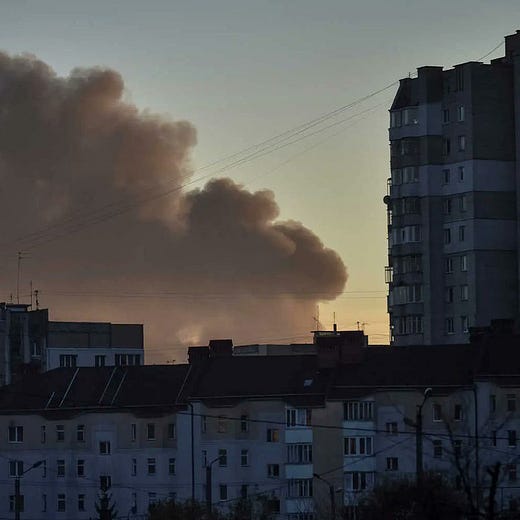
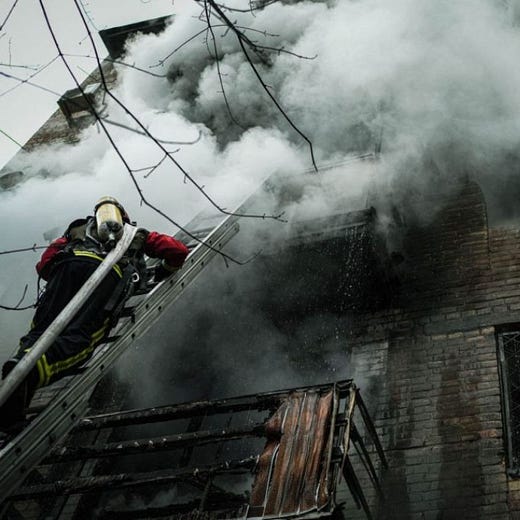
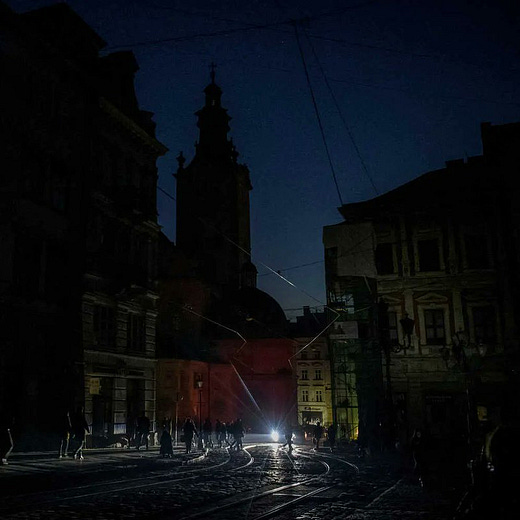
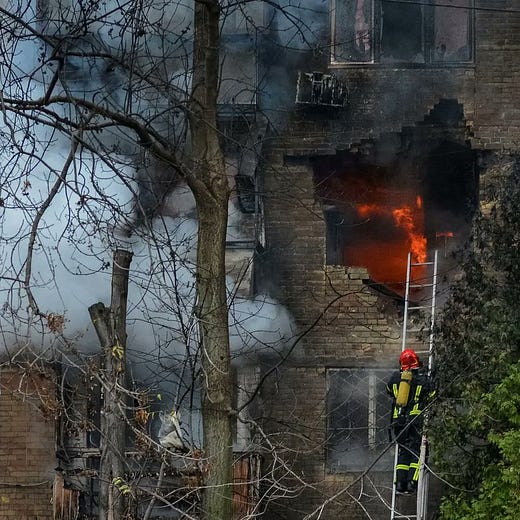






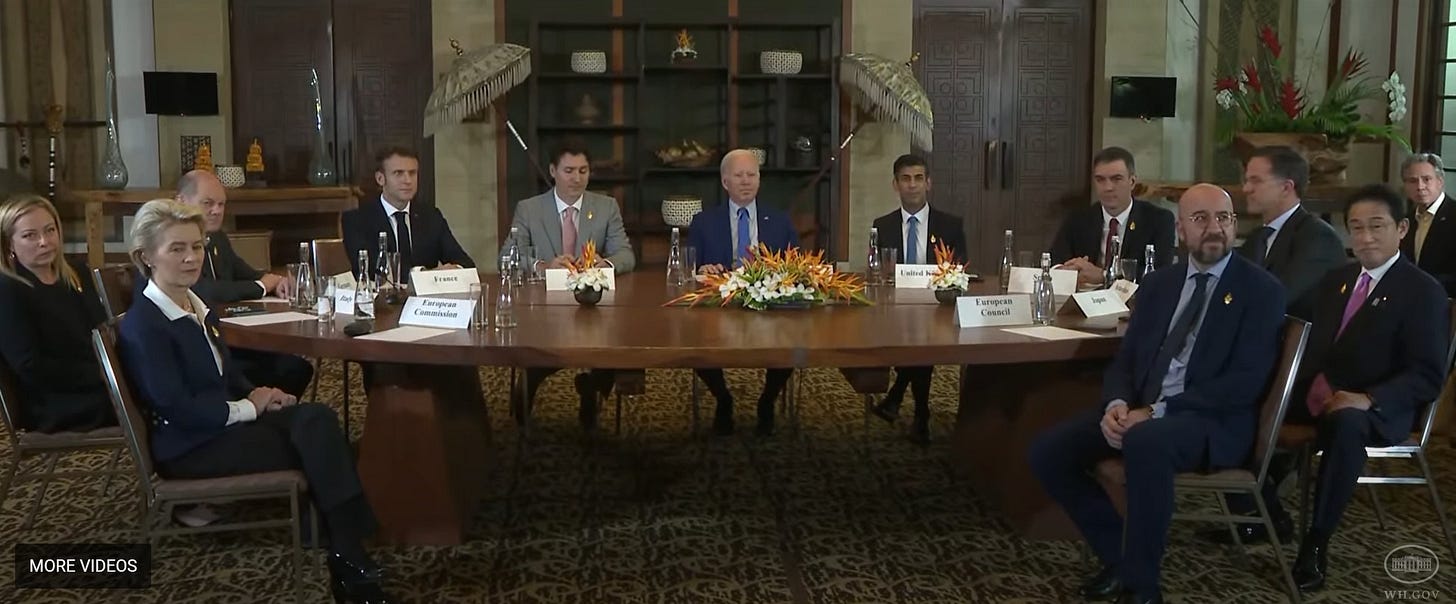

These are not the first non-Ukrainian civilians harmed by this conflict: https://www.theguardian.com/world/2022/mar/14/australia-and-the-netherlands-launch-legal-action-against-russia-over-mh17-disaster
If it is an errant Ukrainian surface-to-air missile it will be a tragic accident. For me, the most important fact is that this situation is a Russian creation, regardless of whose metal ultimately fell on and killed these Polish citizens. If Russia had not fired their barrage of missiles, these Polish citizens would not have died today.
Were an air defense missile to kill neighboring citizens in a friendly state during peacetime, there would likely be a serious but dignified investigation, an apology, and reparations. Under the current circumstances this situation will likely be used by Russia and Ukraine to attack each other's moral standing. Unfortunately, Ukraine - having the moral high ground - has much more to lose on the diplomatic stage. I was dismayed to see reports that President Zelenskyy stated that the missile was Russian, not Ukrainian. If that turns out not to be true it seems like a misstep for the usually savvy Zelenskyy administration.